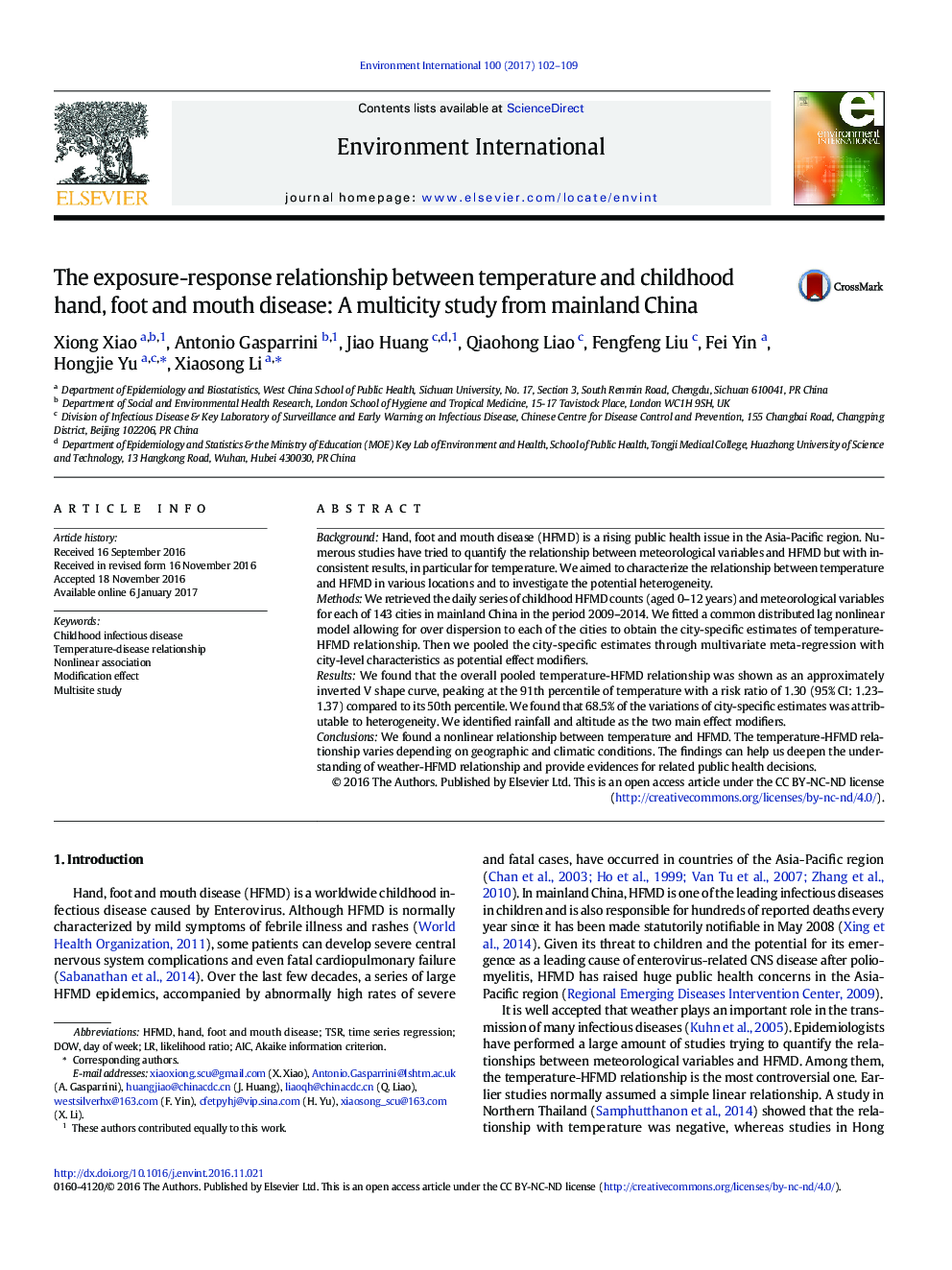| کد مقاله | کد نشریه | سال انتشار | مقاله انگلیسی | نسخه تمام متن |
|---|---|---|---|---|
| 5748332 | 1619030 | 2017 | 8 صفحه PDF | دانلود رایگان |
- Temperature was associated with the incidence of HFMD with nonlinear relationship.
- The temperature-HFMD relationship show spatial heterogeneity.
- A multicity study was done to explore the potential modification effect.
- Rainfall and altitude may have modification effects on temperature-HFMD relationship.
BackgroundHand, foot and mouth disease (HFMD) is a rising public health issue in the Asia-Pacific region. Numerous studies have tried to quantify the relationship between meteorological variables and HFMD but with inconsistent results, in particular for temperature. We aimed to characterize the relationship between temperature and HFMD in various locations and to investigate the potential heterogeneity.MethodsWe retrieved the daily series of childhood HFMD counts (aged 0-12 years) and meteorological variables for each of 143 cities in mainland China in the period 2009-2014. We fitted a common distributed lag nonlinear model allowing for over dispersion to each of the cities to obtain the city-specific estimates of temperature-HFMD relationship. Then we pooled the city-specific estimates through multivariate meta-regression with city-level characteristics as potential effect modifiers.ResultsWe found that the overall pooled temperature-HFMD relationship was shown as an approximately inverted V shape curve, peaking at the 91th percentile of temperature with a risk ratio of 1.30 (95% CI: 1.23-1.37) compared to its 50th percentile. We found that 68.5% of the variations of city-specific estimates was attributable to heterogeneity. We identified rainfall and altitude as the two main effect modifiers.ConclusionsWe found a nonlinear relationship between temperature and HFMD. The temperature-HFMD relationship varies depending on geographic and climatic conditions. The findings can help us deepen the understanding of weather-HFMD relationship and provide evidences for related public health decisions.
Journal: Environment International - Volume 100, March 2017, Pages 102-109
